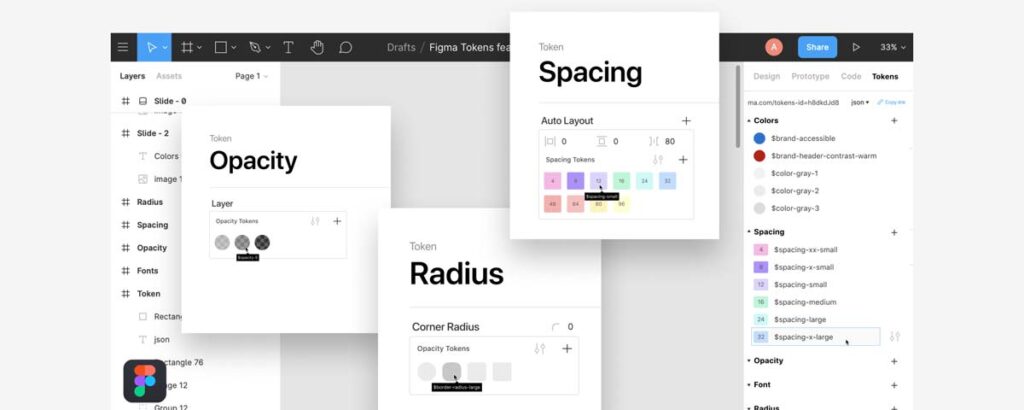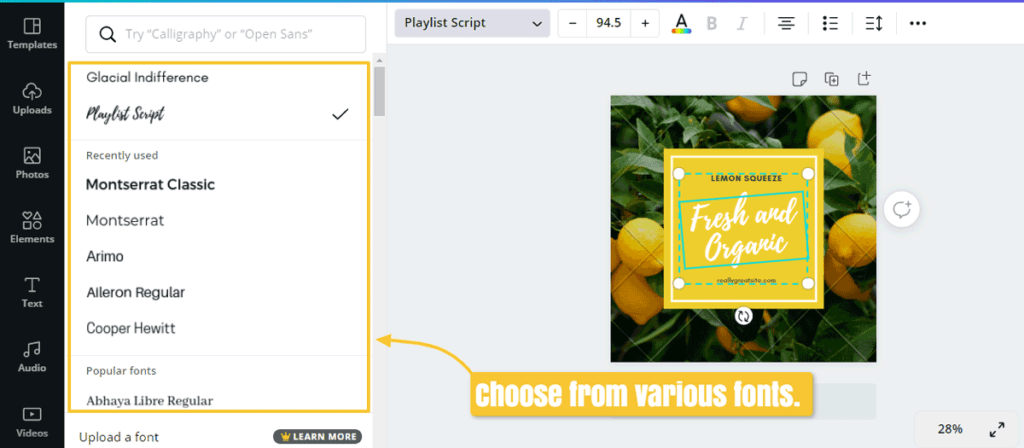Top 10 Best Web Tools for Designers
Whether you're a seasoned pro or just starting, having the right web tools in your toolbox can make all the difference in bringing your creative visions to life. With new apps and services launching constantly, staying on top of the latest and most significant options can be tricky. That's where this guide comes in!
In the following article, we'll walk through the top web tools for designers in 2024. From wireframing and prototyping to graphics and animation, we've got you covered with the best of the best. We'll even touch on handy plugins, collaboration platforms, and other resources to make your workflow smoother.
So get ready to get equipped! By the end, you'll have a robust suite of web tools that will spark creativity, streamline processes, and help you deliver stunning results faster than ever. Let's get started!
Wireframing & Prototyping Web Tools
When kicking off any new web design project, one of the first steps is to map out the site structure and layout. This is where wireframing and prototyping tools come into play. Here are some top options:
Figma

Over the past few years, Figma has quickly become one of the most popular online design platforms. As a web-based tool, there's no need to download any software. Figma makes crafting wireframes simple, building clickable prototypes, and designing complete UI kits.
Key features include:
- Multiplayer mode for real-time team collaboration
- Vector design tools for smooth, scalable graphics
- Varied frame/layer organisation systems
- Abundant UI libraries and templates
- Interactive prototyping and comments
- Top-notch integration ecosystem
With flexible pricing plans including a free tier, it's easy to see why Figma is many designers' go-to for bringing concepts to life.
Adobe XD
Adobe XD packs a one-two punch for design and prototyping needs as part of the Adobe Creative Cloud suite. Like Figma, it facilitates team collaboration through shared design specs and prototypes. However, it seamlessly integrates with other flagship Adobe apps like Photoshop and Illustrator via the Creative Cloud.
Standout Adobe XD features:
- Robust selection of vectors, textures, UI elements
- Voice prototyping for conversational experience testing
- Auto-animate tool for easy interactions
- Availability on desktop and mobile apps
- Integration with top analytics, dev, and design platforms
XD is likely a no-brainer way to level up ideation and bring concepts to life for those already using other Adobe products.
InVision Studio
Geared specifically for web and mobile app design, InVision Studio is a streamlined, vector-based tool for crafting clickthrough site maps and prototypes. Plus, it includes plenty of pre-made material and asset libraries, so you don't have to start totally from scratch.
Noteworthy aspects of InVision Studio:
- 200+ material and UI libraries
- Smooth animations and conditional interactions
- Live Share for remote team collaboration
- Developer handoff features to ease product build processes
- Free Public plan available
As an end-to-end solution, InVision Studio takes the hassle out of mocking up digital products from the first idea to the final testable prototype.
Graphic Design Tools
Graphic design follows once the information architecture and interaction flows are squared away. This phase involves honing visual aesthetics through logos, images, typography, colour schemes, and more. Here are the leading options:
Canva

The web-based graphic design platform Canva makes light work of creating stunning social media posts, presentations, posters, reports, infographics, and other visual materials. It offers an intuitive drag-and-drop interface and a massive library of fonts, images, icons, illustrations, and design templates.
Other useful Canva features include:
- Photo editor with one-click enhancements
- Brand kit builders
- Animated elements
- Collaborative workflows
- Content calendar integration
- Free basic account
With plenty of flexibility and customisation for pros but enough simplicity for amateurs, Canva is a top choice for efficiently bringing graphic design ideas to life.
Adobe Creative Cloud
It's impossible to talk about graphic design without mentioning Adobe Creative Cloud. This suite of industry-standard apps like Photoshop, Illustrator, and InDesign sets the bar for digital design and photo/video editing tools. While it doesn't offer the simplicity of Canva, Creative Cloud gives skilled designers way more control and advanced capabilities.
Some things that set Adobe CC apart:
- Best-in-class image compositing and manipulation
- Vector design with industry-leading precision
- Sophisticated layout engines
- Ability to design for print and digital mediums
- Deep customisation options
- Integration with other Adobe apps
At $20-50+ per month, Adobe CC costs a pretty penny. But for professional-grade results, it remains the gold standard for graphic design.
Vectornator
For iPad users, Vectornator is a must-have graphic design app for creating illustrations, logos, icons, and more. It includes all the core vector graphics tools but with the natural experience of using Apple Pencil and touch gestures.
Notable Vectornator features:
- Apple Pencil and trackpad support
- 5000+ vector design assets
- Multi-stop gradients and colour management
- Smart slices and masks
- Real-time collaboration
- Easy developer handoff
As the top iPad vector illustration app, Vectornator brings desktop-level power to mobile.
Animation Tools
Animation is no longer just for cartoons. Subtle motion design goes a long way in making websites more dynamic, engaging, and fun to interact with. These tools help bring movement to digital products:
Adobe After Effects

After Effects is the industry go-to for adding Hollywood-level motion graphics, visual effects, and compositing to websites, product demos, app promos, explainer videos, and more, while complex for beginners, those knowledgeable with keyframes, masks, shape layers, and other aspects can create dazzling animations.
Notable aspects of After Effects include:
- Keyframe animation for precise control
- Compositing of video, images, UI, text, 3D assets
- Hundreds of animation presets
- Virtual camera moves
- Audio reaction triggers
- Extensive third-party plugins
While not cheap, an After Effects subscription unlocks immense possibilities for custom motion designs.
Haiku Animator
For more approachable web animation, Haiku Animator streamlines crafting SVGs, GIFs, and videos with natural motion. Simply select elements and add triggers like taps, swipes, timeline delays, and more to make them come to life.
Helpful Haiku highlights:
- Handy gesture-driven interactions
- No coding experience is required
- Libraries of customisable assets
- Native integrations with Figma, XD, Sketch, etc.
- Affordable indie licensing tiers
All in all, Haiku offers an easy on-ramp to boost UX through animated interactions.
Principle
The principle merges the ease of use with advanced power for interactive animated prototypes. The sketch-based workflow makes it simple to test ideas before development. Exportable assets then facilitate smooth handoff to engineers.
Notable Principle features include:
- Keyframe and scroll-based animations
- iOS and Android libraries for context
- 100+ material motion presets
- Ability to import Sketch and Figma files
- One-click developer specs
- Free trial version
Principle hits the mark for interactive animation to bridge the gap between concept and delivery.
Top Plugins & Extensions
Plugins and browser extensions unlock added dimensions for many standard design programs. Here are a few favourites:
- Contrast – This Figma plugin analyses colour contrast to meet WCAG accessibility guidelines
- Wrippo – Offers a widget library for rapid high-fidelity prototyping in Figma
- Unsplash – Gives access to over 4 million free stock photos without leaving Figma
- Google Fonts – Browses and tests Google Fonts directly within Figma
- Stark – Enables multi-artboard exports with one click from Sketch
- Invision Craft – Syncs Sketch files to Cloud prototypes with automatic updates
- WhatFont – Instantly identifies fonts on any webpage
With countless options available, plugins streamline all UI and UX design workflow aspects. Regularly browse repositories like Figma Community, Adobe Exchange, and Anima App for new releases.
Top Collaboration Platforms
To align dispersed teams and stakeholders throughout iterative design processes, versatile collaboration platforms are a must. Here are two great choices:
Miro

Miro is an online visual workspace where creative and technical teams can diagram concepts together. Its infinite virtual whiteboards support sticky notes, freehand drawing, images, shapes, connectors, and more. Folders structure initiatives while real-time video chat bridges geographical barriers.
Key Miro features:
- Visual collaboration in real time
- Whiteboards for each project stage
- Drag and drop sticky notes, text boxes, files
- Built-in templates for workflows
- Comment threads and tasks
- Multiple permission levels
As an all-in-one visual platform, Miro pushes workflows forward faster.
InVision Freehand
Whereas Miro offers more structure, InVision Freehand provides a blank digital space for unfiltered creativity. Using an Apple Pencil with iPad Pro, teams sketch concepts, diagrams, wireframes, and workflows by freehanding ideas as they flow. Contents automatically sync to the cloud for sharing across locations.
Notable aspects of Freehand:
- The natural feel of pencil on “paper.”
- Easy multi-user collaboration
- Import images from Camera Roll
- Embed shapes and stickies
- Presentation mode to share concepts
- Seamless linkages with Studio
Freehand facilitates frictionless visual ideation for teams craving the flexibility of a physical whiteboard but without geographic constraints.
Additional Resources
Beyond core design programs, many supplementary resources help elevate workflows:
- Dribbble – Prominent designer community to get inspiration from top pros and teams
- Awwwards – Showcases cutting-edge digital designs across websites and apps
- Behance – Digital arts platform filled with incredible portfolios and projects
- UI Design Daily – Email newsletter delivering the best UI design links daily
- Design+Code – Online learning hub focused on design tools and coding
- DesignCourse – YouTube channel reviewing the latest programs and workflows
Immersing yourself in standout work will undoubtedly spark creativity and teach new techniques. With so much continual advancement in the field, the learning never stops!
Conclusion
The world of web tools continues expanding at a dizzying rate. Yet, while flashy new options come and go, the classics in this guide tend to stand the test of time. When used skillfully, they provide everything needed to craft beautiful, functional digital products from first concept to final deployment.
Of course, no single program provides a magic bullet. But by combining the specialised strengths across wireframing, graphic design, animation, collaboration, and prototyping tools listed above, the sky's the limit for bringing innovative interfaces to life!
So bookmark this guide, equip yourself with the best apps, and get ready to unleash your creative potential as a top web designer!
Frequently Asked Questions
Which free tool is best for beginner web designers?
Canva provides the most straightforward drag-and-drop interface, plus a wealth of templates and assets to start designing graphics, social posts, and other visuals without prior experience.
Is Figma better than Adobe XD?
Both Figma and XD allow for efficient team collaboration on wireframes and prototypes. Figma runs entirely in the browser, while XD requires a desktop app download. Figma pricing works for individuals and enterprises alike, whereas XD fits as part of a full Adobe subscription.
What's the difference between wireframing and prototyping?
Wireframing maps out the information architecture and content structure in simple low-fidelity diagrams. Prototyping then adds interactivity, visual details, realistic content, and animation flourishes to test potential UI/UX solutions.
Can I animate designs without coding?
Tools like Adobe After Effects, Haiku, and Principle use keyframes, triggers, and timelines to animate designs and prototypes without writing code. Developers can then export production-ready files.
Why use design collaboration platforms?
Remote collaboration tools like Miro and Invision Freehand provide digital whiteboard workspaces for teams to brainstorm concepts regardless of location. This alignment brings energy and speed to creative initiatives.
